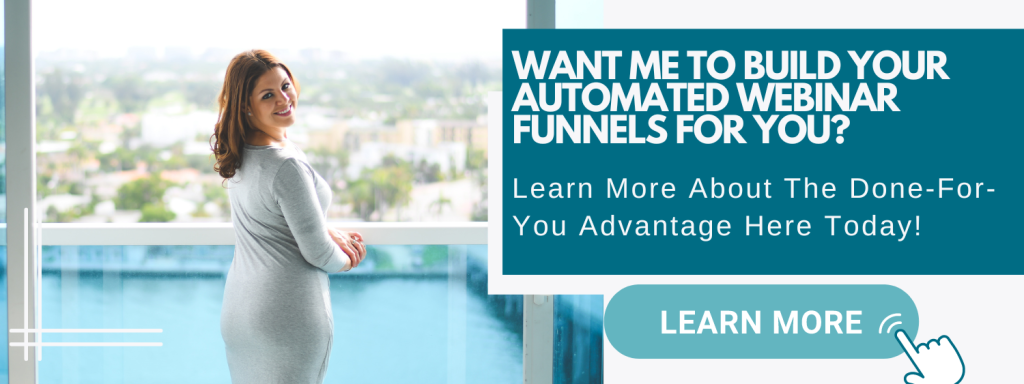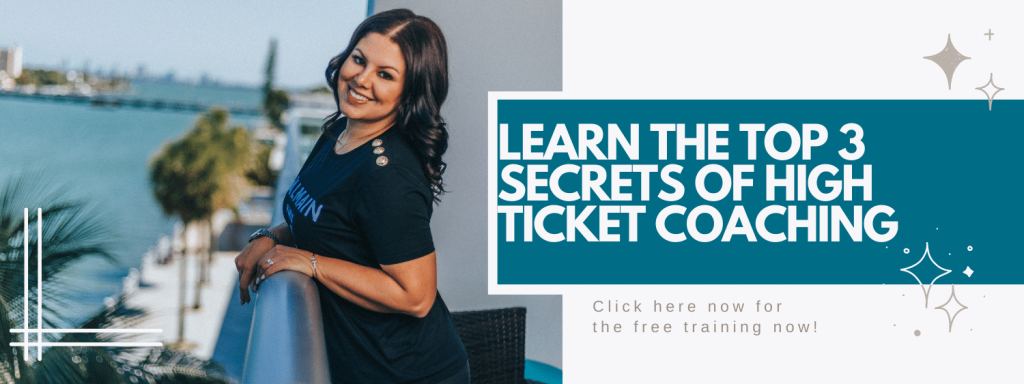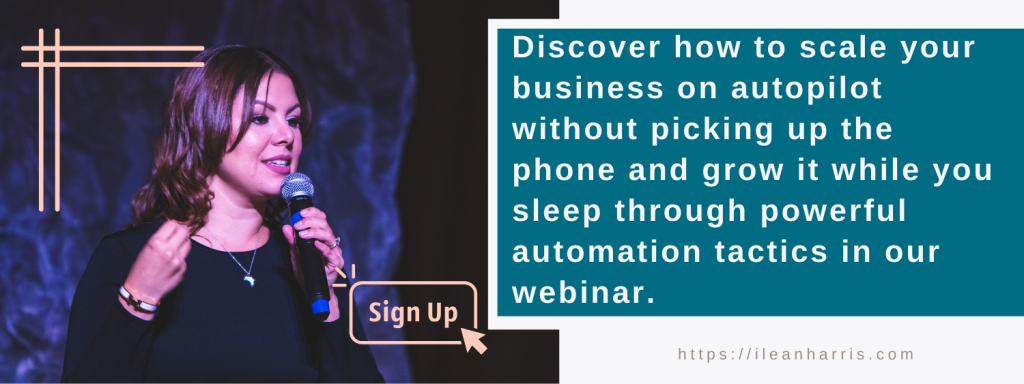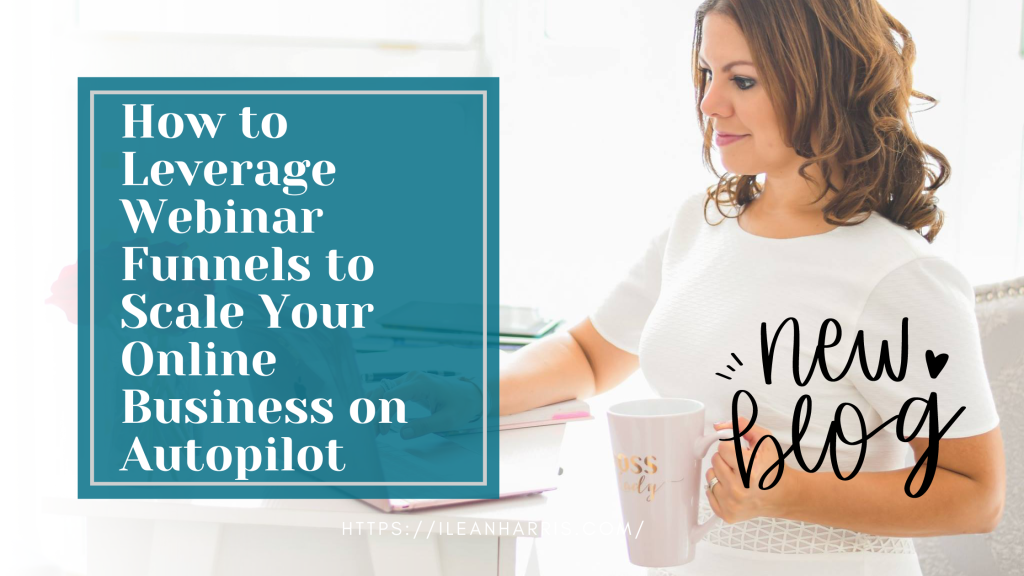
This post is all about webinar sales funnel.
Webinars have emerged as one of the most effective ways to market and sell products or services online. They offer an opportunity for businesses to engage with potential customers, provide them with valuable information, and ultimately drive sales.
But to make the most of webinars, you need a solid webinar sales funnel in place.
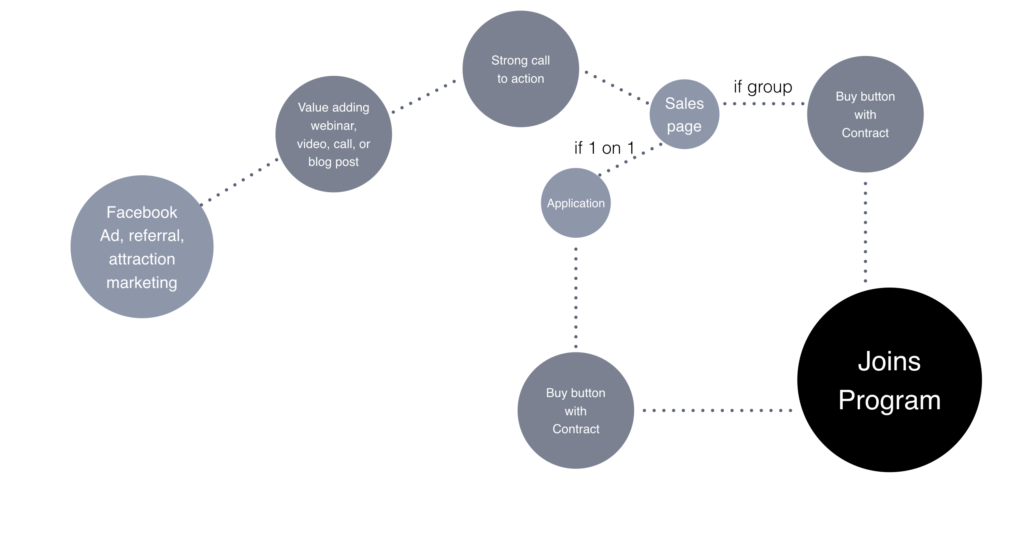
A webinar sales funnel is a series of steps designed to turn webinar attendees into paying customers. It involves creating a landing page to promote the webinar, setting up an email sequence to follow up with attendees, and designing a sales page to convert leads into buyers.
Learning these strategies and implementing them took me from a hot mess to a success and allowed my business to grow to have clients in over 20 countries and over 100,000 email subscribers.
You can too! But it won’t fall out of the sky. Thankfully, you are in the right place to learn more.
In this blog post, we’ll go through each of these steps and show you how to leverage webinar funnels to scale your online business on autopilot.
How to Leverage Webinar Funnels to Scale Your Online Business on Autopilot
Step 1: Create a landing page
The first step in creating a webinar sales funnel is to create a landing page to promote your webinar. This page should be designed to capture the attention of potential attendees and encourage them to register for your webinar.
When designing your landing page, it’s important to keep the following best practices in mind:
- Keep it simple: Your landing page should be clean and simple, with a clear headline and a brief description of what attendees can expect to learn from your webinar.
- Use visuals: Images and videos can help capture your audience’s attention and convey your message more effectively than text alone.
- Use social proof: Including testimonials or social proof can help build trust and increase the likelihood that someone will register for your webinar.
- Use a clear call-to-action: Your call-to-action (CTA) should be prominent and encourage people to register for your webinar.
To create a landing page, you can use a landing page builder tool like Leadpages or ClickFunnels.
These tools allow you to create and customize landing pages without any coding knowledge.
Step 2: Set up an email sequence
Once someone registers for your webinar, it’s important to follow up with them via email to remind them of the webinar and provide them with any additional information they need.
To set up an email sequence, you can use an email marketing tool like Mailchimp, ConvertKit, or ActiveCampaign. These tools allow you to create and schedule automated emails that will be sent to your webinar attendees at specific intervals.
Click here to learn more about email marketing.
Your email sequence should include the following types of emails:
- Confirmation email: This email should be sent immediately after someone registers for your webinar to confirm their registration and provide them with any additional information they need.
- Reminder emails: These emails should be sent a few days before the webinar and the day of the webinar to remind attendees to join.
- Follow-up emails: After the webinar, you should send a follow-up email thanking attendees for joining and providing them with any additional resources they may find useful.
Step 3: Design a sales page
The final step in creating a webinar sales funnel is to design a sales page to convert leads into customers. This page should be designed to highlight the benefits of your product or service and encourage people to take action.
When designing your sales page, it’s important to keep the following best practices in mind:
- Use clear and concise language: Your sales page should be easy to read and understand, with a clear value proposition and a strong call-to-action.
- Highlight the benefits: Your sales page should focus on the benefits of your product or service, rather than just the features.
- Use social proof: Including testimonials or case studies can help build trust and increase the likelihood that someone will buy from you.
- Offer a guarantee: Offering a money-back guarantee can help reduce the risk for potential customers and increase the likelihood that they will make a purchase.
To create a sales page, you can use a sales page builder tool like ClickFunnels, Leadpages, or Unbounce. These tools allow you to create and customize sales pages without any coding knowledge.
Step 4: Drive traffic to your webinar sales funnel
Now that you have your landing page, email sequence, and sales page set up, it’s time to start driving traffic to your webinar sales funnel. There are several ways to do this, including:
- Social media: Use social media platforms like Facebook, Instagram, and Twitter to promote your webinar and drive traffic to your landing page.
- Paid advertising: Consider running paid ads on platforms like Facebook, Google, or LinkedIn to reach a larger audience. Click here to learn more about digital advertising.
- Email marketing: Use your email list to promote your webinar and encourage people to register.
- Affiliate marketing: Consider partnering with affiliates who can promote your webinar to their audience in exchange for a commission on sales.
It’s important to test different traffic sources and see which ones work best for your business.
Step 5: Analyze and optimize your webinar sales funnel
The final step in leveraging webinar funnels to scale your online business is to analyze and optimize your funnel. This involves tracking metrics like registration rate, attendance rate, and conversion rate, and making changes to your funnel to improve these metrics.
To analyze your funnel, you can use tools like Google Analytics, ClickFunnels, or Leadpages. These tools allow you to track and analyze key metrics and make data-driven decisions to optimize your funnel.
Some ways to optimize your funnel include:
- Testing different headlines, images, and copy on your landing page to improve your registration rate.
- Testing different email subject lines and content to improve your attendance rate.
- Testing different offers and pricing on your sales page to improve your conversion rate.
By analyzing and optimizing your funnel, you can continually improve your webinar sales funnel and drive more sales for your business.
Click here to learn more about evergreen webinars.
Conclusion
Webinars are a powerful tool for marketing and selling products or services online. By creating a webinar sales funnel, you can turn webinar attendees into paying customers and scale your online business on autopilot.
By following the steps outlined in this post – creating a landing page, setting up an email sequence, designing a sales page, driving traffic, and analyzing and optimizing your funnel – you can create a highly effective webinar sales funnel that drives consistent sales for your business.
This post is all about webinar sales funnel.


